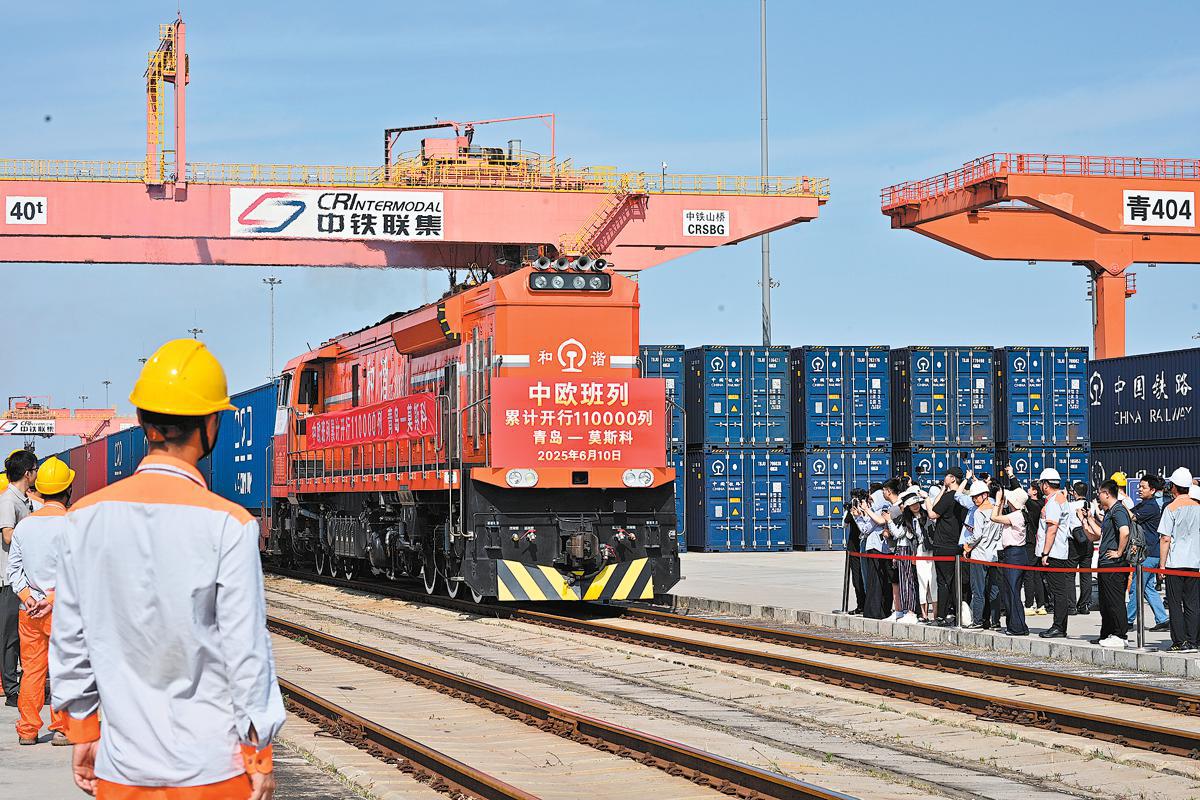Rail reliability delivers steady success
China-Europe freight train network grows as competitive link to overseas markets


Decade of expansion
From making just a handful of trips in 2011, the year of the network's launch, the China-Europe Railway Express has grown to handling 19,000 round trips in 2024, 10 percent up on the year prior, transporting over 2 million twenty-foot equivalent units, according to Xinhua News Agency.
In total, as of July, it's estimated that the service had completed more than 110,000 round trips, carrying goods worth over $450 billion.
The network has grown to cover nearly the entire Eurasian landmass. Inside China, three main routes — the western, central and eastern — attract cargo from different regions.
Beyond China's borders, three corresponding corridors stretch into Europe. Recent years have seen successful trial operations of the southern corridor, opening new gateways to the continent. Close coordination with foreign railway companies has expanded and diversified these international routes, creating a transcontinental network that is efficient, extends in multiple directions, and connects land and sea transport.
A total of 128 Chinese cities run freight trains to 229 cities in 26 European countries, and over 100 cities in 11 Asian countries. Customs procedures have also been streamlined. With the rollout of the "95306 System" digital platform, customs clearance that once took half a day now takes less than 30 minutes on average.
There are 14 regional consolidation hubs inside China that channel goods into outbound trains, ensuring smoother distribution. Cargo from different regions is gathered at these hubs and organized before being shipped to Europe. Nearly nine out of 10 China-Europe freight trains are assembled and dispatched through these hubs nationwide.
In the early years, there was a significant trade imbalance flowing east to west, with many empty containers on the return journey.
To address this, China Railway Container Transport, a State-owned logistics operator, established subsidiaries in Kazakhstan, Germany and Russia to forge closer partnerships with local railways, ports and logistics companies.
This deeper integration has gradually created a more balanced two-way flow, reducing empty runs and boosting overall efficiency.
A growing number of European exports, ranging from machinery and pharmaceuticals to luxury goods, are now heading east on trains that once returned half-empty.
This has contributed to lower costs for Chinese exporters and more reliable schedules, as the network no longer bears the inefficiencies of empty backhauls.
Transportation hubs, such as Xiamen in Fujian province, have felt this transformation.
"The China-Europe trains from Xiamen not only carry Chinese products abroad but bring back foreign goods into China," said Wu Wei, marketing manager at Xiamen International Logistics Port.
In recent years, the logistics port has received Belgian chocolates, Belarusian beef jerky, Polish yogurt, and cosmetics such as face masks and eye creams.
























